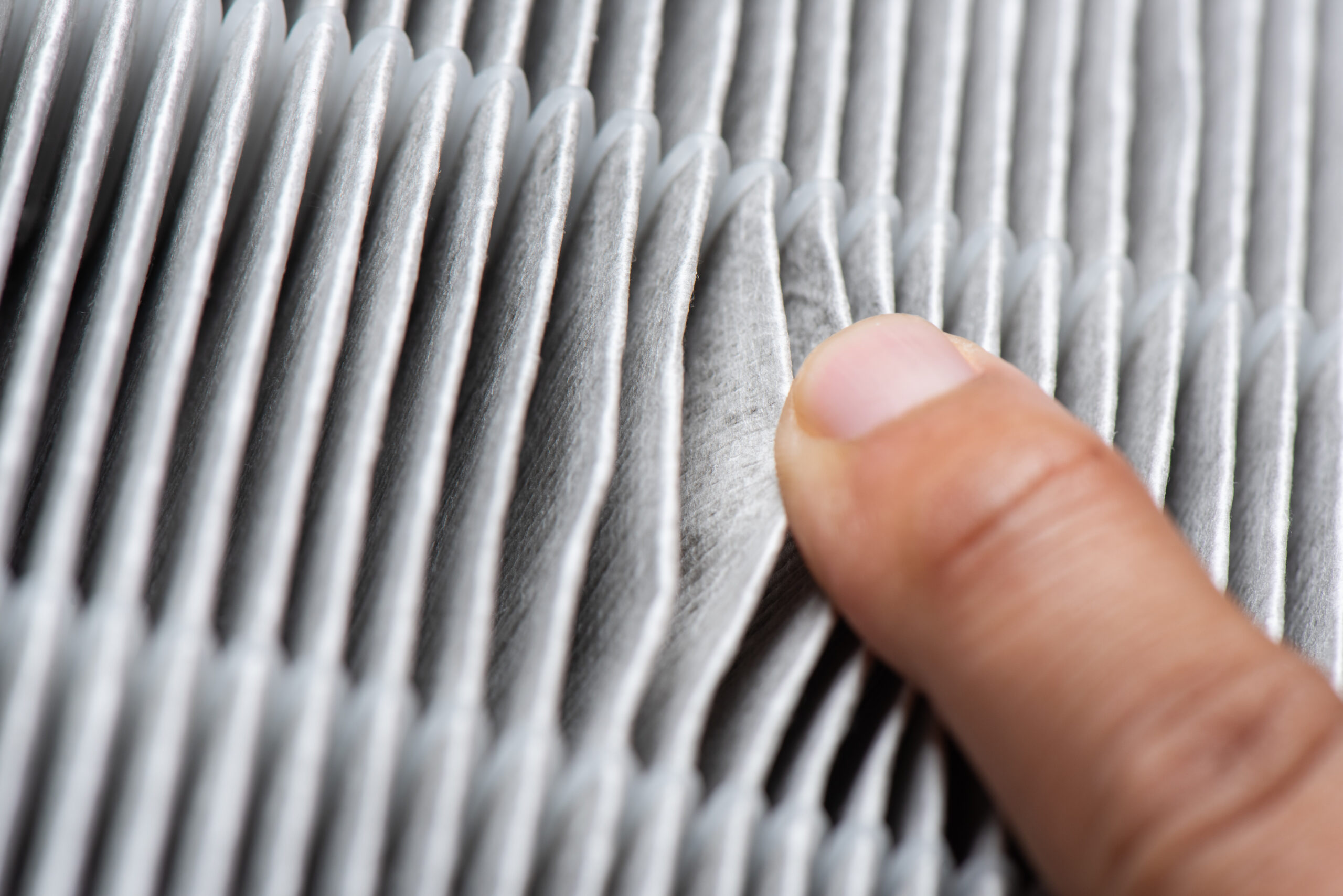


Know the Right Filters To Get for Cleaner, Healthier Air
From budget fiberglass filters to hospital-grade HEPA units, homeowners today face more options than ever. The question is — which one is right for your family? At Tin Man Heating & Cooling, we make it simple. Our team helps you compare the choices and find the perfect balance of air quality, efficiency, and cost for your Bowling Green or Findlay home.

Not all filters are created equal. Here’s a breakdown of the most common types and how they differ:
Pleated filters are the most popular upgrade from cheap fiberglass models. They’re made of folded fabric material that creates more surface area to trap particles. They come in different MERV ratings, with higher ratings capturing finer contaminants. Pleated filters are a great balance of price, protection, and availability, making them a solid choice for most homes in Bowling Green.
HEPA (High-Efficiency Particulate Air) filters go far beyond standard pleated filters, capturing more than 99% of airborne particles as small as 0.3 microns — including smoke, bacteria, and fine dust. They’re commonly used in hospitals and labs but can also benefit households with severe asthma, allergies, or respiratory sensitivities. However, not every HVAC system can handle them because they are so dense. Professional installation and system evaluation are critical.
Media filters are larger (typically 4–6 inches thick) and unfold to cover up to 75 feet of filtration material. This gives them a much longer lifespan than standard pleated filters — often six months to a year between replacements. They’re especially effective for homes near farmland, highways, or construction areas in Wood County where airborne dust levels are higher.
Electrostatic filters use static electricity to pull in and trap particles like pollen, smoke, and pet dander. Disposable versions work like standard filters, while reusable versions can be washed and reused for years. They’re a good fit for pet owners or households looking for an eco-friendly option. The downside is that they must be cleaned regularly to remain effective, which requires more homeowner attention.
UV filters aren’t actually filters but sterilization systems that use ultraviolet light to neutralize bacteria, mold, and viruses as air passes through your HVAC system. They’re not designed to trap dust or allergens, so they’re best used as a supplement to another filter type. Homeowners often choose UV systems if they’re concerned about illness prevention or mold problems.
Choosing a filter isn’t as simple as grabbing the cheapest one off the shelf. Here’s what to look at when shopping:
1. Size Matters
Filters must fit snugly in your system. Most filters have their dimensions (e.g., 16x25x1) printed on the frame. If not, measure the slot in your furnace or air handler. A filter that’s even slightly undersized allows unfiltered air — and dust — to bypass it.
2. Thickness Affects Performance and Lifespan
1-inch filters are affordable but need to be replaced every 30–60 days.
4–6 inch filters last longer (up to 12 months) and capture more pollutants thanks to their larger surface area.
3. Understand MERV Ratings
MERV (Minimum Efficiency Reporting Value) measures how well a filter traps particles.
MERV 1–8: Basic protection, mostly for large particles — not recommended for modern homes.
MERV 9–12: Solid protection for most families; captures pollen, dust mites, and mold spores.
MERV 13–16: High-efficiency level suitable for families with asthma or severe allergies.
For most Wood County households, MERV 11–13 provides the right balance of clean air and good airflow.
4. Match Your Lifestyle
Pets: Look for filters designed for dander and fur.
Allergies or asthma: HEPA or electrostatic filters are best.
Dusty environments: Media filters hold more particles and last longer.
Health concerns: Pair a main filter with UV lights for added germ protection.
Thin Fiberglass Filters
They’re cheap and easy to find, but they provide minimal protection. These filters only catch large debris like lint or hair, letting smaller particles (pollen, dander, dust) pass straight into your system.
High-MERV or HEPA Without Checking Compatibility
It’s tempting to buy the “highest-rated” filter thinking it must be best. But overly dense filters can restrict airflow if your furnace or AC isn’t built for them. This strain can increase energy bills or even damage your equipment.
Improperly Sized Filters
A filter that’s too small or the wrong dimensions won’t seal properly. That leaves gaps where unfiltered air — and dust — bypasses the filter completely. Always match your system’s required size.
The Bottom Line: Not every filter on the shelf is right for your home. Taking a moment to consider size, efficiency, and system compatibility will save you headaches later — and make sure the filter you choose actually improves your air quality.
Now that you know what to avoid, here’s why choosing the right filter pays off:
A weak or clogged filter lets allergens and pollutants circulate, making allergy and asthma symptoms worse. A strong filter improves indoor air quality, giving your family relief during pollen season and Ohio’s humid summers.
If dust constantly piles up on your shelves and vents, your filter may not be doing its job. A quality filter traps more particles at the source, reducing how often you need to clean.
Your HVAC system depends on steady airflow. A clogged or low-quality filter forces the blower motor to work harder, raising utility bills. A properly matched filter keeps airflow smooth and costs down.
We get calls every year in Bowling Green where “broken” furnaces or ACs are really just clogged filters. Restricted airflow can freeze coils, overheat motors, and cause unnecessary repairs. The right filter prevents those problems and extends equipment life.
For a low cost and minimal effort, the right filter protects both your home and your HVAC investment. It’s one of the simplest and most effective maintenance steps you can take.
Tin Man Heating & Cooling stocks pleated, HEPA, media, and electrostatic filters — plus UV add-ons for families who want extra germ protection. Instead of guessing in the hardware aisle, let our team recommend the filter that fits your system and lifestyle.
Call 419.827.5799 to inquire about a filter upgrade in Findlay or Bowling Green, OH.
How do I know what size filter I need?
Check the edge of your current filter or measure the slot. Standard sizes like 16x25x1 are common, but every system is different.
Are the cheapest filters okay?
Thin fiberglass filters catch only large debris. They don’t protect your system well and won’t improve your air quality.
Can I install a HEPA filter in any system?
Not always. HEPA filters are dense and can restrict airflow. Ask a professional before upgrading.
How often should I replace my filter?
1-inch filters: every 30–60 days
4–6 inch media filters: every 6–12 months
Washable electrostatic: clean monthly
Do UV lights replace a filter?
No. UV lights kill germs but don’t capture dust. They should be paired with a filter.
Can the wrong filter damage my HVAC system?
Yes. Using a filter that’s too restrictive or the wrong size can reduce airflow, overwork the blower motor, and even cause breakdowns. Always match the filter to your system’s specs.